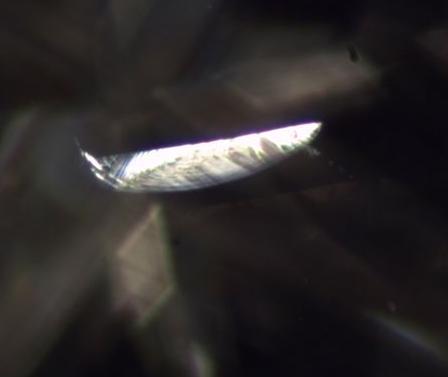Eye-Visible Inclusions in Diamonds
An eye-visible inclusion in a diamond refers to an internal flaw or imperfection that can be seen with the naked eye, without the need for magnification. These inclusions can affect the diamond’s appearance, brilliance, and value, making clarity an essential factor when selecting a diamond.
Common Types of Eye-Visible Inclusions
Black Carbon Spots – Dark inclusions that stand out against the diamond’s transparency.
Feathers – Internal cracks that can weaken the diamond and be visible if large or positioned near the surface.
Clouds – Groups of tiny inclusions that create a hazy or milky appearance.
Crystals & Mineral Inclusions – Embedded natural crystals (can be white, black, or colored) visible within the diamond.
Pinpoints – Small white or black spots that, when clustered, can be noticeable.
Needles – Long, thin, needle-like inclusions that may reflect light.
Knots – Inclusions that reach the surface, sometimes appearing as bumps or rough areas.
Cavities – Small holes on the surface of the diamond, sometimes filled with foreign material.
Should You Buy a Diamond with Eye-Visible Inclusions?
For budget-conscious buyers: A well-placed SI1 inclusion can be a great value choice.
For engagement rings or investment pieces: Avoid visible inclusions, as they impact beauty and resale value.
For everyday wear: Ensure inclusions don’t weaken the diamond’s structure.
Would you like help selecting a diamond that looks flawless to the eye while staying within budget?
